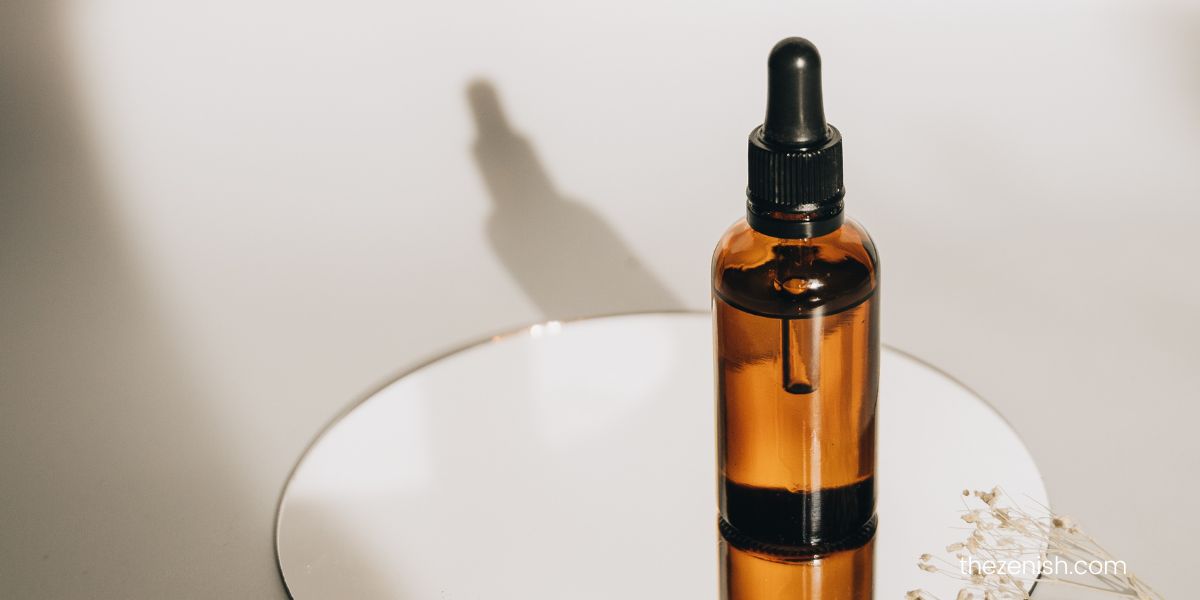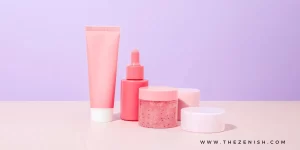If you’re looking for a gentler way to cleanse your skin, it might be time to try an oil cleanser.
An oil cleanser is a great alternative to traditional water-based foaming cleansers because it’s much gentler on the skin barrier and will leave your face feeling moisturized and soft not dry and irritated.
However, to get the best results it’s important that you know how to use one so you don’t start getting breakouts.

What is an Oil Cleanser?
An oil cleanser is a type of face wash that uses oils as the primary cleansing agent.
It’s different from other types of cleansers because it doesn’t contain soap or other surfactants that can strip away the natural oils from your skin.
This makes oil cleansing a great option if you have dry or sensitive skin and want to avoid harsh ingredients, but it also works well for all skin types.
What are the benefits of using oil cleansers?
Here are 7 of the many benefits of using an oil cleanser:
- Oil is a natural moisturizer that leaves skin feeling moisturized, soft, and supple
- Oil cleansers are not just good for your skin but they make removing your make-up, oil and impurities easier.
- Oil cleansers are also helpful in clearing acne, blackheads, and whiteheads.
- Some oils have antibacterial properties that can help clear up acne or prevent breakouts from occurring in the future
- Oil cleansers don’t strip the natural oils from your skin like other types of cleansers do.
- You do not have to worry about dryness or tightness after using an oil cleanser
- The benefits of using oil cleansers are long lasting and will not wear off during the day like other types of make-up removers.
Here’s how to use an oil cleanser
Step 1: Apply the oil cleanser to your dry skin in a circular motion.
Step 2: Massage your face with the oil, making sure that you work it into all the creases around your nose, mouth and eyes.
Step 3: Use warm water (or a damp cloth) to remove the oily residue from your skin.
Step 4: Follow the oil cleanse with a water-based cleanser to remove any residue (if you have oily, acne-prone skin or want to double cleanse)
Step 5: Continue with the rest of your skincare routine
Do you wash your face before oil cleansing?
No, it’s not necessary to wash your face before oil cleansing. Oil cleansing will cleanse your skin by breaking down makeup, grime, and excess sebum, and can be the first step in your skincare routine.
So no need to wash your face beforehand.
However, after oil cleansing, you can double cleanse by following with a water-based cleanser to help remove all traces of the cleansing oil to prevent clogged pores and breakouts.
How to choose the right oil cleanser for your skin type
It is important to choose the right type of oil cleanser for your skin type. Because the wrong type of oil can do more harm to your skin than good.
Oily skin: choose light-weight, non-comedogenic (non-pore clogging) oils that won’t clog pores or cause breakouts.
Normal skin: can use most oils without any problems but may need to be careful with acne prone areas such as the T-zone and chin area.
Dry skin: need oils that are rich in fatty acids that won’t leave the skin feeling tight or dry after cleansing.
Sensitive skin: needs gentle fragrance free oils that won’t irritate sensitive areas such as the eye area or around the mouth and nose or cause allergic reactions.
Products to try
- TATCHA Pure One Step Camellia Oil Cleanser (for dry & sensitive skin)
- Clinique Take The Day Off Cleansing Oil (for acne-prone skin)
- The Ordinary Squalane Cleanser (for combination oily skin)
How often should you use an oil cleanser? Should you use one every day?
How often you oil cleanse will depend on your skin type, and your personal preference, but in general, you should oil cleanse once a day.
For example, if you have dry skin, then you may want to use an oil cleanser twice a day – once in the morning and again at nighttime.
However, If you have oily skin, you may only want to use an oil cleanser once a day.
Do you wash off oil cleanser?
Unlike facial oils, which are meant to stay on your skin and serve as a final hydrating step, cleansing oils should be removed completely.
Otherwise, they can cause breakouts and prevent other the other product in your skincare routine from working properly.
You can wipe off oil cleansers with a warm washcloth to help open up your pores and remove any bacteria that can cause breakouts.
Or you can rinse with lukewarm water or follow up with a foam cleanser if you feel the oil left some residue on your face.
Should you use an oil cleanser even if you don’t wear makeup?
Yes, you can use an oil cleanser even if you don’t wear makeup.
Oil cleansers aren’t just for removing makeup but can also be used to remove excess dirt and oil on the skin and help with your skin’s oil production and balance.
They can also help with mild acne breakouts and dry skin. So, even if you don’t wear makeup, it is worth it to use an oil cleanser.
Which skin concerns can be resolved by oil cleansing?
Oil cleansing can be used to address many different skin concerns, depending on the type of oil being used.
For example, if you have dry skin, you could use an oil with moisturizing or healing properties such as coconut oil.
If you have oily or acne-prone skin, then an astringent or anti-inflammatory oil might be more appropriate such as rosehip seed oil.
Final thoughts
Oil cleansers can be a great option if you want a deep cleanse without stripping your skin of its natural oils.
And they’re not just for oily skin either. They’re ideal for any skin type, especially if you have dry or sensitive skin types.
Oils are gentle enough to be used on the face without irritation and they contain antioxidants, which will help your skin look healthier and younger.



